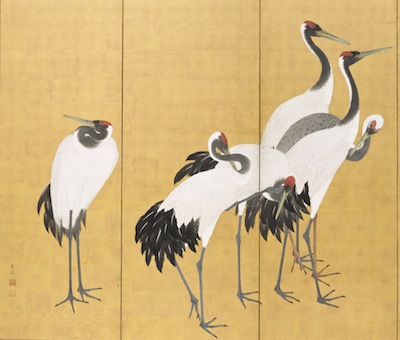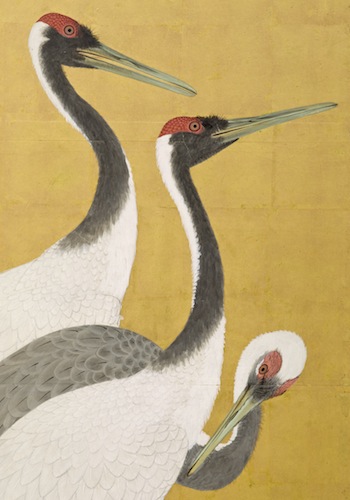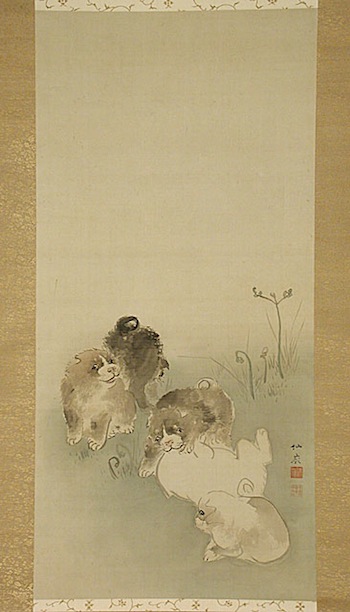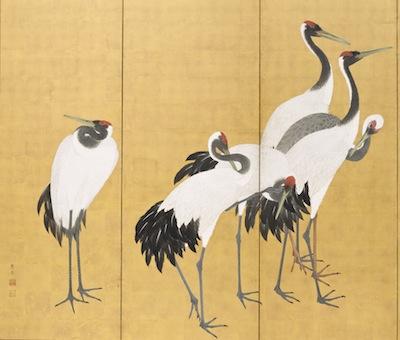In Japanese culture, the crane is a symbol of good fortune and longevity and has played an integral role in art and literature. Chances are you’ve seen cranes depicted in some form or other in popular Japanese art (if you’re anything like me, when you were young, you also may have read—and been slightly traumatized by—Sadako and the Thousand Paper Cranes). Those (non-origami) depictions were likely copied—or at the very least heavily influenced by—Maruyama Okyo (1733–95), a painter who revolutionized the practice and taught or influenced generations of Japanese painters.
 Maruyama Okyo, Cranes (detail), 1772 (An’ei period, 1772-1780), gift of Camilla Chandler Frost in honor of Robert T. Singer
Maruyama Okyo, Cranes (detail), 1772 (An’ei period, 1772-1780), gift of Camilla Chandler Frost in honor of Robert T. Singer
Through the perseverance and diligence of Robert T. Singer, curator of Japanese art, LACMA recently acquired a pair of Japanese screens depicting cranes (read the Los Angeles Times article that explores the acquisition of Cranes in depth) by Okyo that has never before been displayed in the United States. In fact, the pair of screens, created in 1772, has almost never been shown in public anywhere. They were displayed in Japan twice, in 1996 and 2004, and even then only for a matter of weeks. Measuring five-and-a-half feet tall and twenty-two feet long, the screens are in immaculate condition and represent the highest achievement in Japanese painting.
 Maruyama Okyo, Cranes (detail), 1772 (An’ei period, 1772-1780), gift of Camilla Chandler Frost in honor of Robert T. Singer
Maruyama Okyo, Cranes (detail), 1772 (An’ei period, 1772-1780), gift of Camilla Chandler Frost in honor of Robert T. Singer
Okyo’s screens are so rare and valuable, in fact, that the Japanese government has registered four out of the artist’s last five pairs of screens as National Treasures, making it impossible for them to leave Japan except for on loan.
And the fifth pair? Now at LACMA. After Singer’s two-year campaign to acquire the screens, LACMA was granted an official export license by the Ministry of Culture of Japan in honor of the museum’s concerted effort to strengthen and highlight its collection of Japanese art.
In addition to Cranes, LACMA's has other paintings by Okyo, including the adorable Five Puppies.
 Maruyama Okyo (attributed to), Five Puppies, 18th century, gift of Carl Holmes
Maruyama Okyo (attributed to), Five Puppies, 18th century, gift of Carl Holmes
The screens are on view now in the Pavilion for Japanese Art.
Jenny Miyasaki



